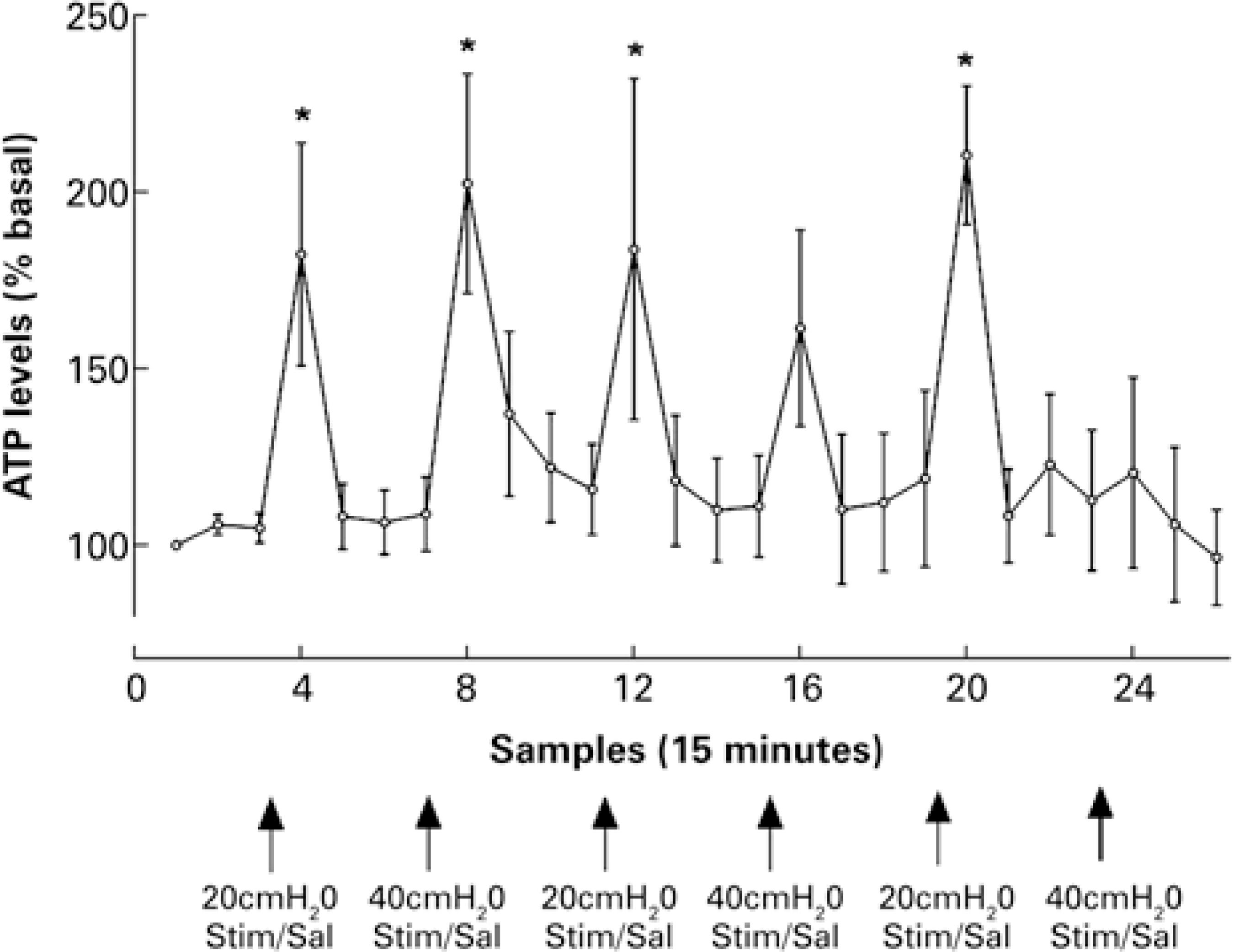ABSTRACT
Objective
To determine adenosine 5’-triphosphate levels in the interstice of spinal cord L6-S1 segment, under basal conditions or during mechanical and chemical activation of urinary bladder afferents.
Methods
A microdialysis probe was transversally implanted in the dorsal half of spinal cord L6-S1 segment in female rats. Microdialysate was collected at 15 minutes intervals during 135 minutes, in anesthetized animals. Adenosine 5’-triphosphate concentrations were determined with a bioluminescent assay. In one group of animals (n=7) microdialysate samples were obtained with an empty bladder during a 10-minutes bladder distension to 20 or 40cmH2O with either saline, saline with acetic acid or saline with capsaicin. In another group of animals (n=6) bladder distention was performed and the microdialysis solution contained the ectonucleotidase inhibitor ARL 67156.
Results
Basal extracellular adenosine triphosphate levels were 110.9±35.34fmol/15 minutes, (mean±SEM, n=13), and bladder distention was associated with a significant increase in adenosine 5’-triphosphate levels which was not observed after bladder distention with saline solution containing capsaicin (10µM). Microdialysis with solution containing ARL 67156 (1mM) was associated with significantly higher extracellular adenosine 5’-triphosphate levels and no further increase in adenosine 5’-triphosphate was observed during bladder distension.
Conclusion
Adenosine 5’-triphosphate was present in the interstice of L6-S1 spinal cord segments, was degraded by ectonucleotidase, and its concentration increased following the activation of bladder mechanosensitive but not of the chemosensitive afferents fibers. Adenosine 5’-triphosphate may originate either from the central endings of bladder mechanosensitive primary afferent neurons, or most likely from intrinsic spinal neurons, or glial cells and its release appears to be modulated by capsaicin activated bladder primary afferent or by adenosine 5’-triphosphate itself.
Adenosine triphosphate; Microdialysis; Visceral afferents; Spinal cord


 ATP: adenosine 5’-triphosphate; Stim: stimulation; Sal: saline; AA: acetic acid; Caps: capsaicin.
ATP: adenosine 5’-triphosphate; Stim: stimulation; Sal: saline; AA: acetic acid; Caps: capsaicin.
 ATP: adenosine 5’-triphosphate.
ATP: adenosine 5’-triphosphate.